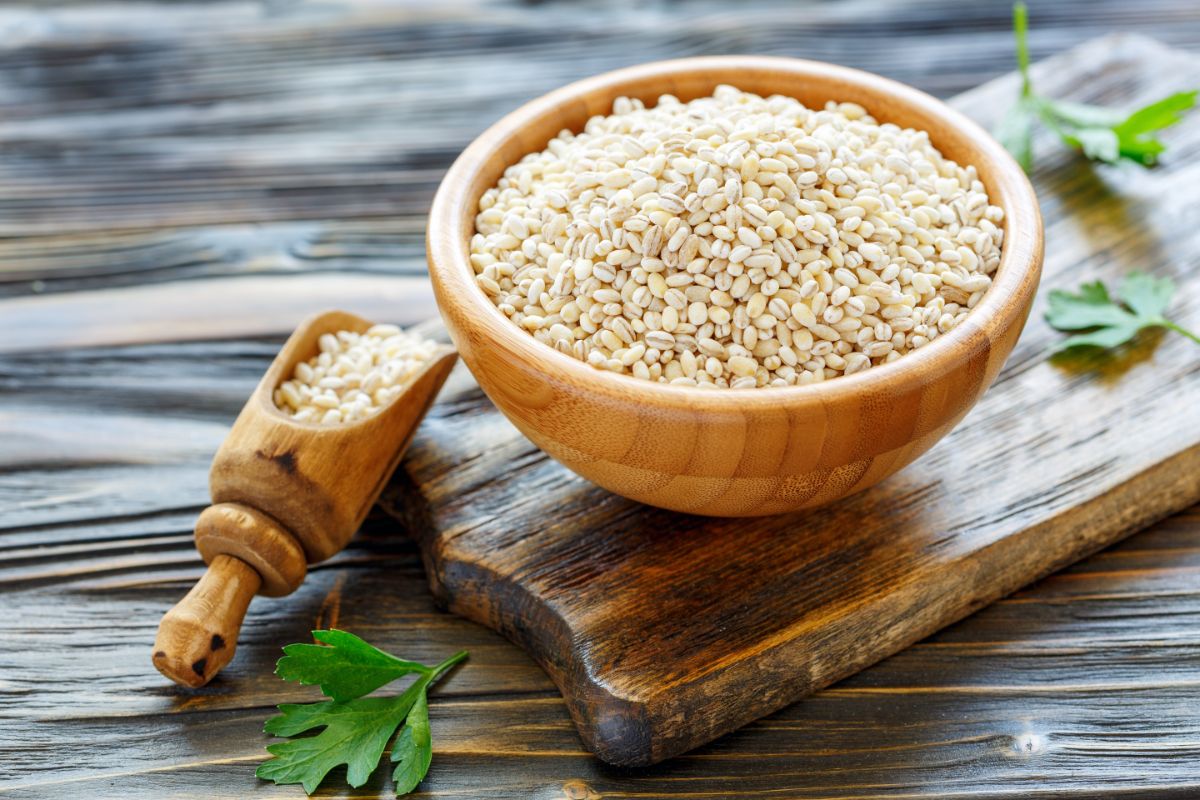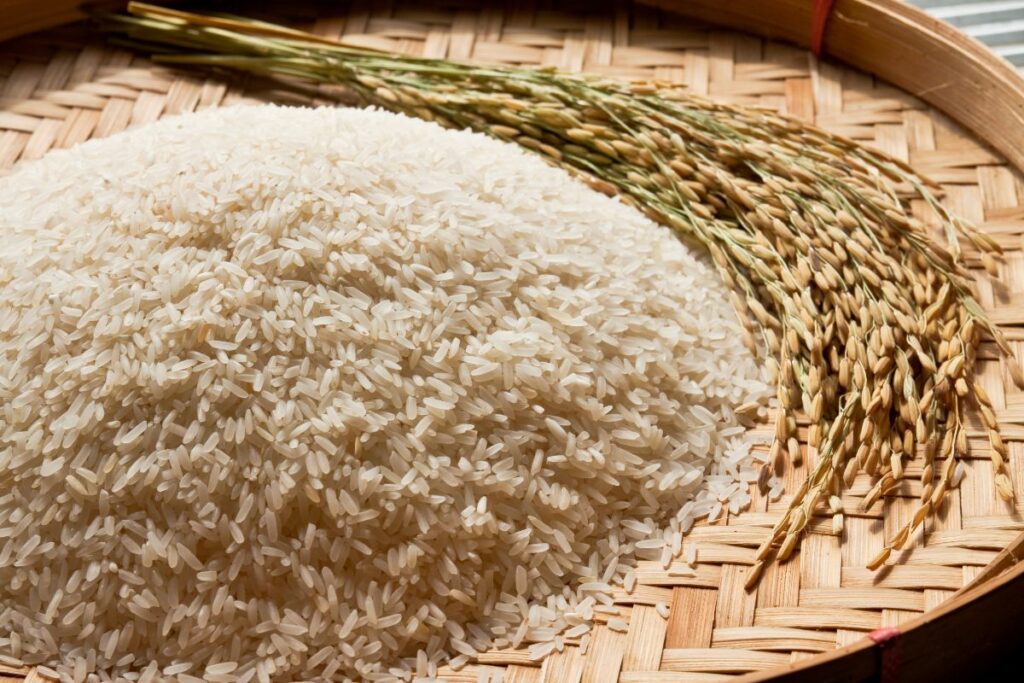Barley and rice are similar in some ways, especially in terms of health and nutrition. While they are different foods, they have a lot of similarities in where they tend to go in our diet.
Barley is a food type rich in protein, B vitamins, fibers, iron, potassium, and magnesium. It also has a low glycemic index, is thrice as high as rice in calories and contains more carbs.
In general barley is better nutritionally in comparison to rice, but let’s look into this a little more, as there is much more to tell.
Barley Vs Rice: History & Use
Barley is a grain which was first cultivated in Eurasia possibly around 10,000 years ago, and since then it has become a large part of the food cycle that humans enjoy since agricultural cultivation became more significant.
We should also consider hulled barley as well, which is a whole grain. Hulled barley goes through the process which removed its cover without removing the bran.
There are multiple types of barley, including hulled barley and pearly. Pearly barley is less nutritious as it loses its bran, so hulled barley is better. However, hulled barley is not perfect as it takes longer to cook.
Rice is yet another grain which has multiple colors, sizes, and shapes. However, our main consideration is white, regular, long, enriched rice.
Rice does not take as long to cook, and its processes are different. Draining rice and throwing the water is not recommended when using enriched rice as when you drain water a lot of the elements which are enriched end up getting washed away.
Rice started being cultivated around 9,000 years ago in the East, but now it is one of the 3 top products harvested in agriculture, alongside maize and sugarcane.
The world loves rice, and it is used in multiple cuisines.
Comparing Nutrition
Now, it is worthwhile considering the nutritional values of both rice and barley based on the weight of 100 grams of each food.
We will consider hulled barley as we already know that pearly barley has less nutritional value anyway. We will also consider white, long, enriched rice.
Calories
Barley has around 3 times as many calories as rice has. Rice only has 130 calories, whereas barley has a much more significant 354 calories. So, there is a stark difference in calories.
Fats
Both of these foods have a pretty negligible fat content, yet, barley actually does have 2 grams of fat. Though it is minimal, it can be considered as negligible.
Proteins
Both of these food types have rich protein contents, however, barley is much richer in protein in comparison. Rice only has 2.69 grams of protein, whereas barley has 12.48 grams of protein.
That being said, while barley is actually quite protein rich, it is not essential amino acid rich. This is an important factor to remember.
Minerals
In terms of mineral profiles, barley is overall better. Barley has a richer overall mineral content in comparison to rice. It has more iron, magnesium, phosphorus, potassium, zinc, and selenium
Be aware that both rice and barley have a low sodium content.
This table will show you how much of your daily needs would be met by consuming 300 grams of each food type.
| Mineral | Barley | Rice | Which Has More? |
| Zinc | 23% | 14% | Barley |
| Copper | 35% | 24% | Barley |
| Calcium | 4% | 3% | Barley (nearly equal) |
| Iron | 50% | 45% | Barley |
| Magnesium | 16% | 9% | Barley |
| Phosphorus | 24% | 19% | Barley |
| Potassium | 9% | 4% | Barley |
| Sodium | 1% | 1% | Equal. |
Vitamins
Barley has an overall higher vitamin rating than rice does. It is much richer in most B vitamins, but rice is richer in its folate content.
The table below shows how much of your daily vitamin needs would be met with 300 grams of each food type.
| Vitamin | Barley | Rice | Which Has More? |
| Folate | 12% | 44% | Rice |
| Vitamin B12 | 0% | 0% | Equal |
| Vitamin K | 0% | 0% | Equal |
| Vitamin A | 1% | 0% | Barley |
| Vitamin E | 1% | 1% | Equal |
| Vitamin D | 0% | 0% | Equal |
| Vitamin C | 0% | 0% | Equal |
| Vitamin B1 | 21% | 41% | Rice |
| Vitamin B2 | 15% | 3% | Barley |
| Vitamin B3 | 39% | 28% | Barley |
| Vitamin B5 | 9% | 24% | Rice |
| Vitamin B6 | 27% | 22% | Barley |

Health Effects
What we eat also has an impact on our health, so eating the right things can actually help to reduce symptoms of diseases, reduce the likelihood of some conditions, and aid in the general health of our bodies.
How can rice and barley impact our health?
Diabetes
When it comes to diabetes, it actually shows that consuming barley in the long term can lead to a decrease in blood glucose levels.
This is primarily shown due to a reduction in the absorption rate of glucose due to the much higher content of fiber found in barley.
Cardiovascular
Eating barley on a fair or regular basis in both men and women who have hypercholesterolemia has actually been shown to reduce the levels of LDL.
This can therefore decrease the overall risks of cardiovascular diseases in both genders.
Do note that consuming white rice in fair to moderate amounts has no correlation whatsoever with any cardiovascular diseases developing.
Gut Microflora
While rice does not make any real difference to the microflora in your gut, the consumption of barley does have a positive effect on the microflora in your gut.
This can then actually ripple over and have positive effects on health overall.
Cancer
Consuming rice has absolutely no relation to cancer development at all.
However, barley grass has been shown to have beneficial effects on reducing cancer cells. This is because it has apoptotic effects on certain cancer cells.
This is not hulled barley grain in itself, however, but it is still important to note.
Negative Health Impacts
There have been studies done which show that there is no actual relationship between the development of cardiovascular diseases and the consumption of rice, however there are notations around the risk of metabolic syndrome development.
If this is not controlled it can then lead to diabetes, cardiovascular diseases and also hypertension. Another risk factor is obesity.
There has been some research conducted on white rice consumption. There was a correlation made with the development of type 2 diabetes and white rice.
One issue with barley is that it does contain gluten. Gluten is a direct cause of multiple inflammatory responses in celiac’s and those who have a gluten intolerance.
Therefore, if you have a gluten intolerance or celiac disease, you should be avoiding barley at all costs. However, rice does not have these issues, as rice contains no gluten.
Overall
Overall, barley is the healthier option, with hulled barley being the best overall type of barley for consumption. However, that being said, barley is not ideal for those with a gluten intolerance or celiac disease.
However, before you indulge in these foods, make sure you consider the rest of your diet as well, and what you are eating alongside these to get a perfectly balanced nutritional diet.
Both barley and rice can be ideal as regular foods, although rice does have some potential health risks.








